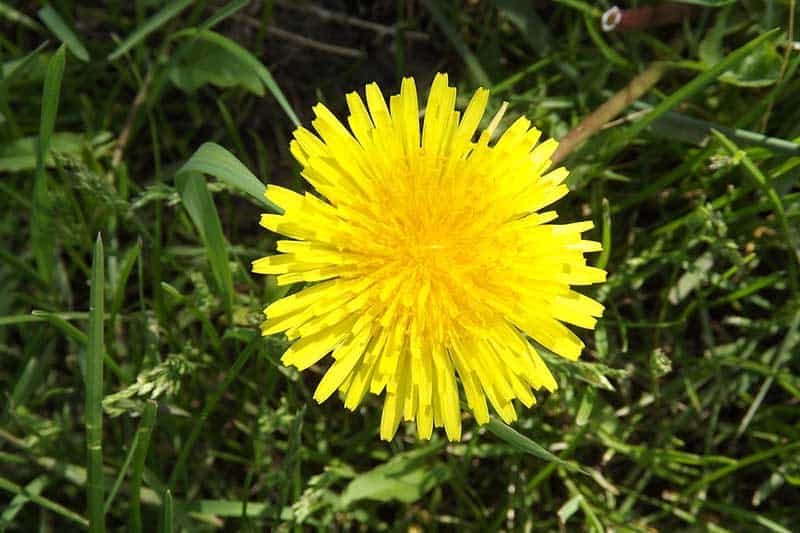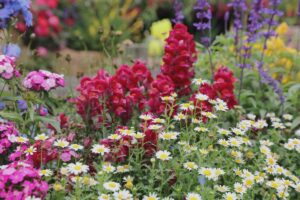This page may contain affiliate links. If you click and buy, we might get a small commission at no cost to you.
Resilient and widespread weeds in Pennsylvania can be a nuisance for any lawn care routine. Most weeds are known for their ability to thrive in sub-par conditions, outcompete other plants for water, and deplete the nutrients in the soil. If you don’t get them under control they can take over your property and ruin your landscaping in no time. So, to help you identify common weeds to remove them from your lawn, here is a list of 15 weeds in Pennsylvania.
15 weeds in Pennsylvania
Don’t let these 15 common weeds take over your lawn and ruin your grass and plants. Let’s find out what they look like so you can spot them for removal!
1. Oxalis

Sometimes mistaken for clover, oxalis has heart-shaped, green leaves that will turn burgundy during the late summer. This annual and opportunistic weed has hairy leaves and produces yellow flowers. You’ll want to keep an eye out and handpick them, including the roots, before seeds start to form and further spread into a full-on invasion.
2. Crabgrass
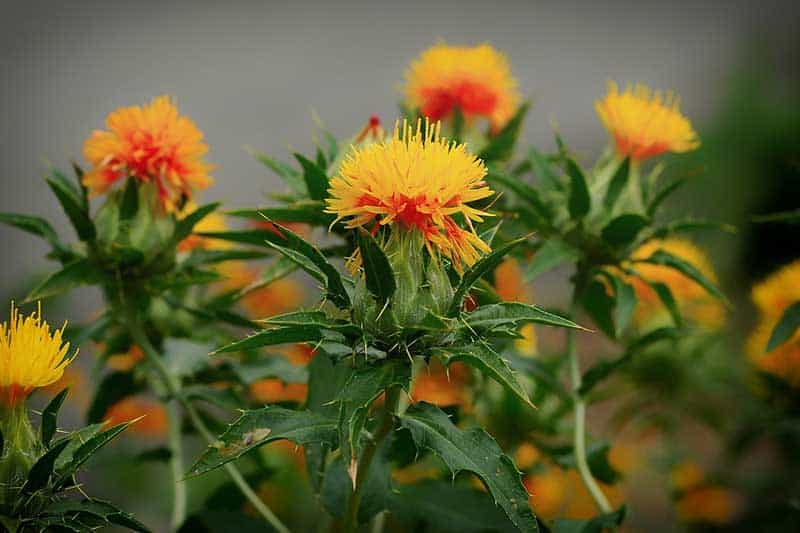
Crabgrass is an annual weed that grows in clumps, easily spreads, and can grow upright to 2 feet. The stems are flat and blade-like, sticking out from lush, green lawns. They can produce up to 150,000 seeds in one growing season that contributes to its spread. You will need a pre-emergent weed treatment to keep it from growing.
3. Black medic
Although black medics also have heart-shaped flowers like oxalis, you can tell the difference from the long stems and black seed pods. It will also produce yellow flowers around 6 weeks into its growth. This weed targets weak grass impacted by drought and heat during the summer, so make sure to keep your lawn maintained, watered, and properly fertilized to stop the weed from thriving.
4. Plantain
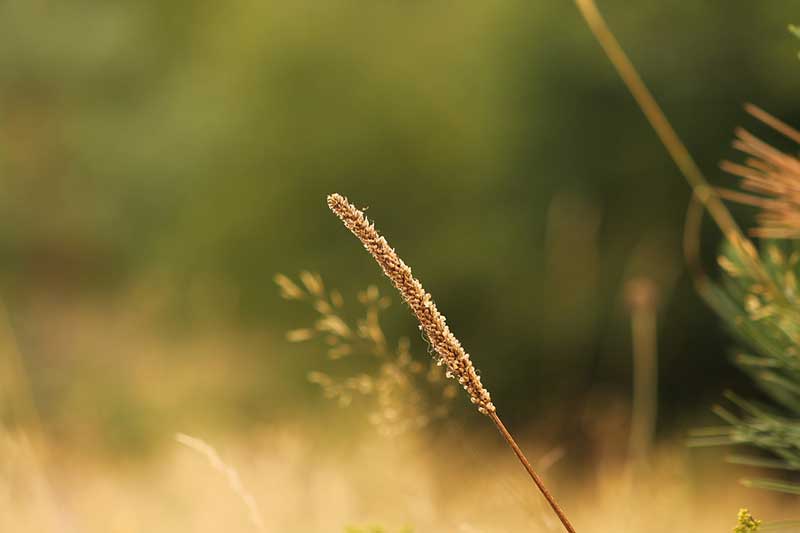
Broadleaf and buckhorn plantain are two common weeds found in Pennsylvania. They both look similar, except the buckhorn plantain has wider and longer leaves. They thrive in compact soil and often sprout up in neglected lawns. You’ll want to tear them out from the roots and make sure to properly clean your lawn equipment because they can spread through contaminated equipment.
5. Nutsedge
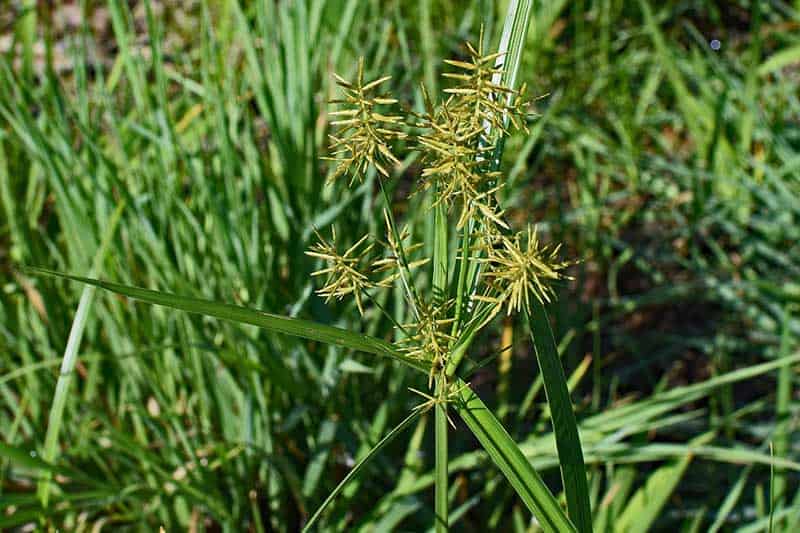
Nutsedge, also called nutgrass, has a grass-like appearance but can wreak havoc on your lawns. They show up around late spring or early summer and outcompete for water and nutrients from heat-challenged grasses. Their 4-feet deep root systems thrive in poorly drained and compacted soils, so try to aerate your lawn and avoid overwatering. They are also best to treat when the weeds have less than 5 to 6 leaves and are at their most vulnerable.
6. Ground ivy
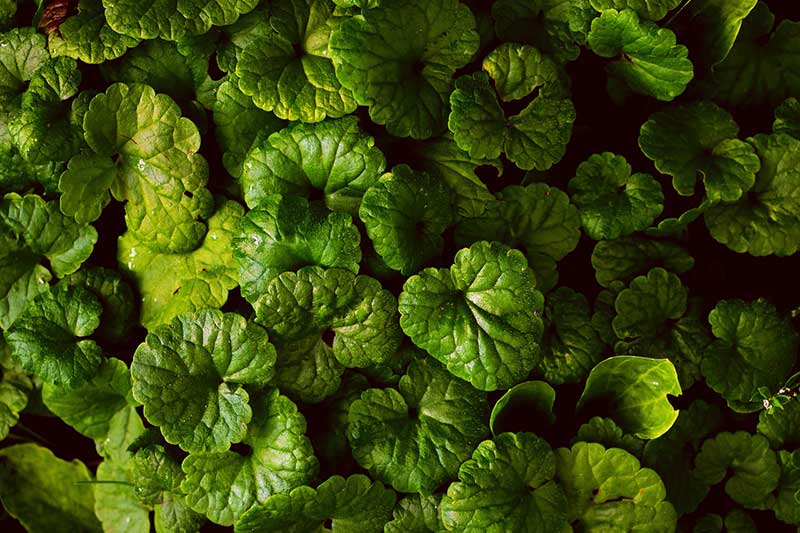
Ground ivy is a broadleaf weed that can be identified by the way it creeps over lawns and spreads rapidly. They emerge in the late spring with square stems, clusters of leaves, and eventually purple flowers. Once they take root, it can require repeated application of herbicides to get them under control.
7. Spotted spurge
Spotted spurge is a low-growing broadleaf weed that commonly grows in the summer and can form a dense mat. They are easily recognized by the tiny dark green leaves and hairy red stems branching out from a central point. They thrive in sandy, dry, and nutrient-poor soils and can be poisonous to animals.
8. Chickweed

Chickweeds typically start showing up in the spring and are best controlled and dealt with in the fall or early spring. You want to prevent them from growing into thick, low blankets of dense vegetation because they become harder to manage. However, their root systems are shallow, so they are fairly easy to pluck from lawns. These weeds have start-shaped flowers and thrive in moist, cool areas with shade.
9. Dandelion

Dandelions are a common broadleaf weed with yellow flowers that is also popular from people blowing its whitish seed pods. However, that is how they spread so easily! This weed can also thrive almost anywhere, including low nitrogen soils. You’ll need to pull out its roots that go 10 inches under the ground to prevent regrowth from the prior year’s taproots.
10. Field bindweed
Field bindweed is a hardy weed that can grow during droughts and have seeds that can lie dormant in the soil for over 50 years. This broadleaf weed grows vines that will twine around neighboring plants. You’ll want to apply glyphosate to them in the fall when they are actively growing or continuously cut away at the vines until the roots die out and stop regrowing.
11. Lambsquarters
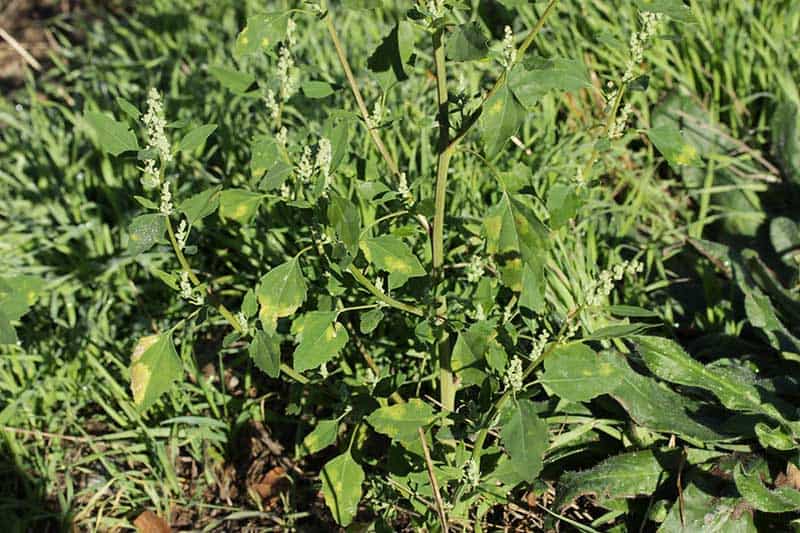
A common garden weed in many areas of the country, Lambsquarters grows well in all soil conditions. They have oval or triangular-shaped, dull green leaves with a powdery white coating. The leaves are actually edible, but make sure to wash off the white coating first and keep them away from animals, such as sheep, because of their oxalic acid.
12. Mustard
Although edible, the broadleaf mustard weed is an invasive species that easily spreads and can thrive in almost any soil type. They grow around 2 to 3 feet tall and have small waxy leaves clasping the main stem where small yellow, 4-petaled flowers grow. Pull them up by the roots to get rid of them.
13. Redroot pigweed
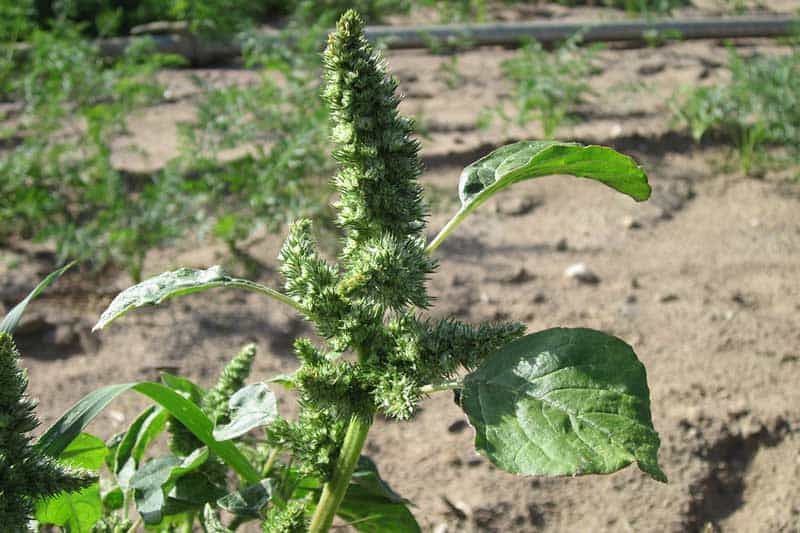
A broadleaf weed, redroot pigweed can be toxic because of its ability to accumulate a lot of nitrates in the stems, especially when growing in nitrogen-rich soils. It has long leaves with prickly seed clusters at the end of the stems and can grow 3 to 8 feet tall. You’ll want to stir the top of your soil to prevent the fragile seeds from growing or use a herbicide containing trifluralin.
14. Stinging nettle
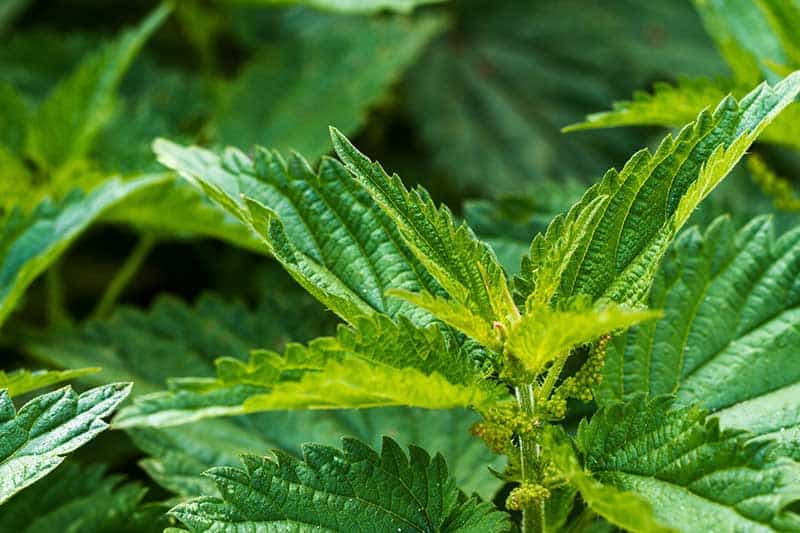
Stinging nettle grow 3 to 6 feet tall and have lance-shaped leaves with toothed edges. These weeds are covered with stiff hairs that are irritating to the skin when you get in contact with them. Pulling them is the best way to control them, but make sure you wear long-sleeved shirts and gloves for protection.
15. Virginia pepperweed
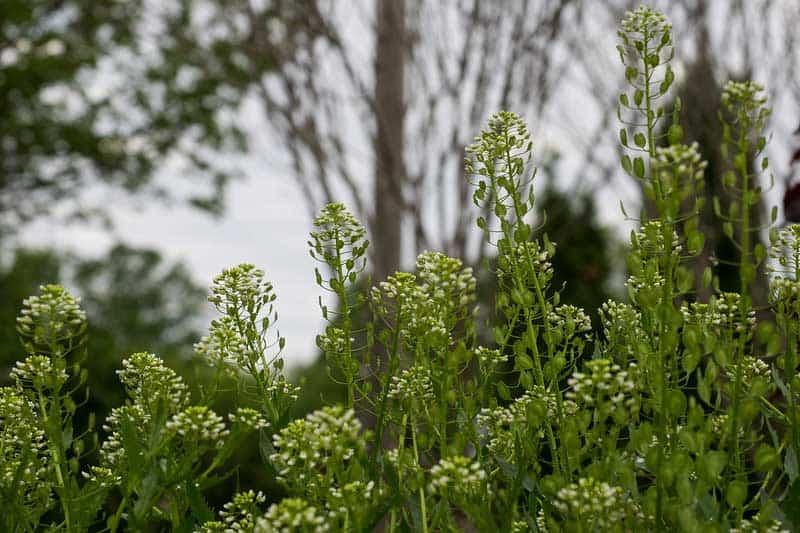
Virginia pepperweed is one of the most common pepperweed species. They rapidly form dense strands that will invade an area and push out native plants. Getting rid of them can be difficult since they produce thousands of seeds and can propagate from root segments. You can pull young plants out or, when safe to do so, burn the plants to kill seeds and roots.
